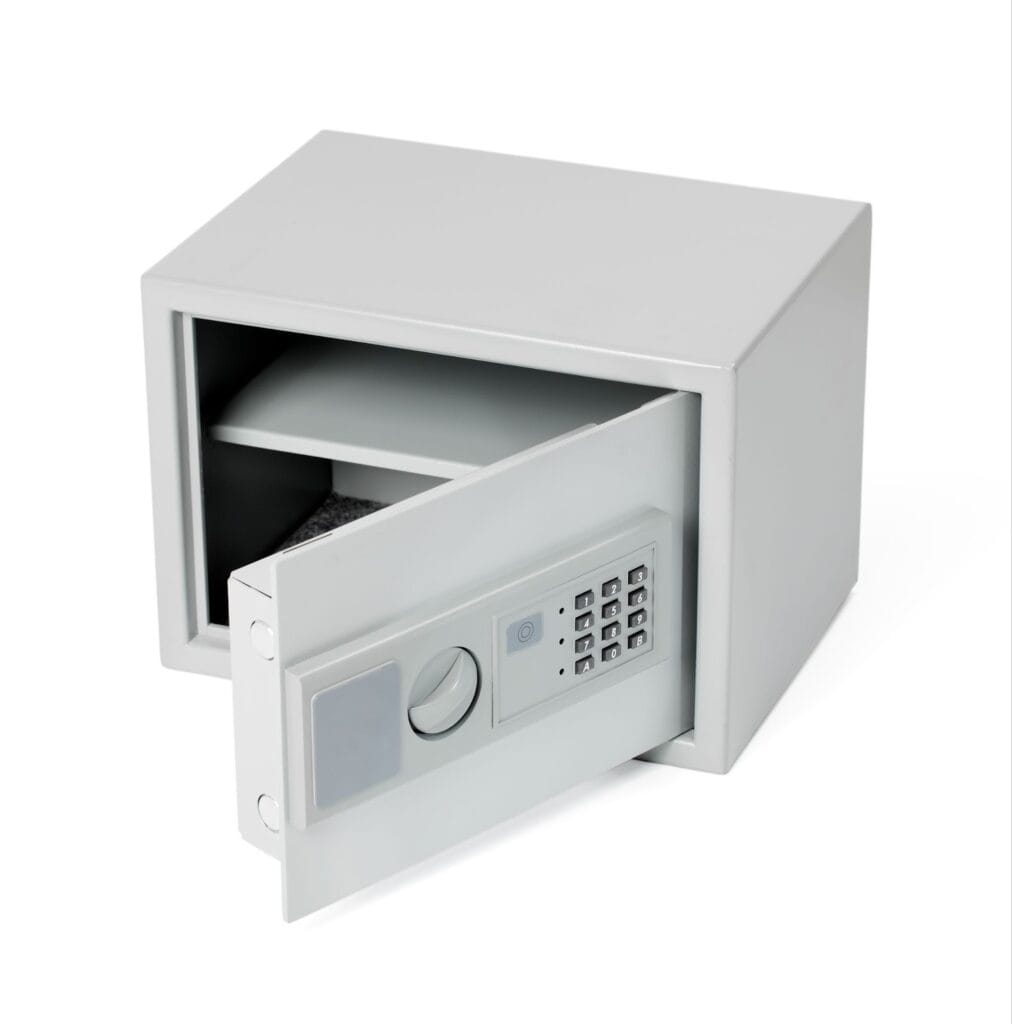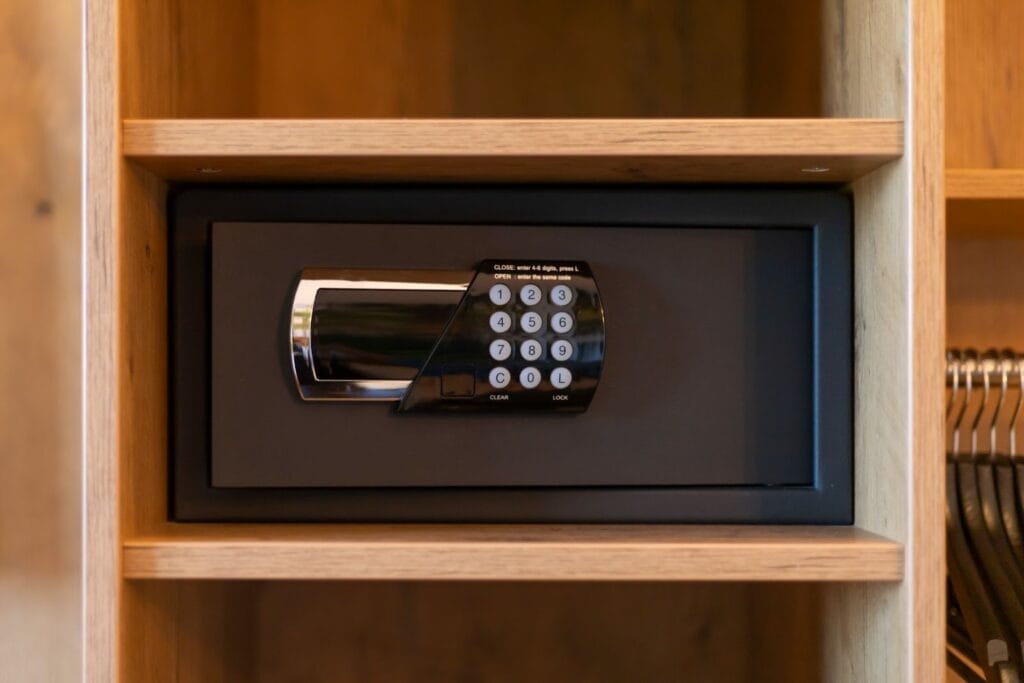Waterproof Home Safes: Keeping Your Valuables Safe from Floods and Water Damage

When disaster strikes, it often happens without warning. A sudden downpour floods the street, a burst pipe drenches the floor, or a storm surge seeps into your basement — and in a matter of minutes, you could lose years of documents, savings, and sentimental treasures. Whether you live in a coastal city like New York or a quiet suburban neighborhood, water damage is one of the most common and expensive types of home loss.
According to the Federal Emergency Management Agency (FEMA), even one inch of water can cause more than $25,000 worth of damage to your home and belongings. That’s why waterproof home safes have become an essential part of smart home security. They’re not just for valuables — they’re for your peace of mind.
At Alpine Safes, we’ve seen how devastating water damage can be for families and business owners. Many of our customers come to us after learning the hard way that a standard safe or cabinet isn’t enough. This guide will help you understand how waterproof safes work, which features actually make a difference, and how to pick the best one to keep your valuables safe, dry, and secure — no matter what happens.
What Makes a Safe “Waterproof”?

A waterproof home safe isn’t just a heavy metal box — it’s a highly engineered piece of protective equipment. These safes are specifically designed to keep out moisture, rainwater, and even floodwater that could otherwise seep in and ruin the contents.
Here’s how it works:
- Watertight Seals and Gaskets – These are rubber or silicone seals placed around the door frame. When closed, they create an airtight, watertight barrier that prevents even tiny droplets from entering.
- Submersion and Spray Testing – Top-rated safes are tested under extreme conditions, such as being fully submerged in water for up to 24 hours or blasted with high-pressure water jets.
- Corrosion-Resistant Steel – Because humidity can rust metal over time, quality safes use special coatings or stainless steel alloys to resist corrosion.
- Impact and Fire Resistance – Many waterproof models are dual-rated, meaning they can withstand water exposure and high temperatures from fires. During a , it’s common for water damage to occur when firefighters extinguish the flames — so fire-and-water protection works hand-in-hand.
In short, a true waterproof safe doesn’t just resist water — it completely seals it out, giving you confidence that your most important items will survive even in the worst situations.
Why Waterproof Protection Matters More Than Ever
Water is both essential and destructive. Every year, thousands of homeowners lose irreplaceable items to leaks, floods, or burst pipes. The scary part? Most of these incidents happen inside the home — not during major storms.
Here’s why waterproof protection is crucial today:
- Unpredictable Weather: With climate change, severe storms and flash floods are becoming more frequent and intense. Even homes that never flooded before are now at risk.
- Plumbing and Appliance Leaks: Water heaters, dishwashers, and washing machines can fail without warning, releasing gallons of water that destroy nearby storage.
- Fire Response: Water damage often follows fire damage — sprinklers and firefighting efforts can soak your property in minutes.
- Humidity and Long-Term Damage: Even without flooding, high humidity can slowly warp documents, fade photos, and corrode metal.
In short, a waterproof safe isn’t just for emergencies — it’s for everyday protection. It ensures your valuables remain untouched even if your home experiences unexpected leaks or disasters.
Key Features to Look For in Waterproof Home Safes
Not all safes labeled “waterproof” actually deliver true protection. Some resist light moisture but can’t withstand full submersion. When choosing a waterproof safe, pay close attention to these must-have features:
1. Verified Waterproof Certification
Look for safes that have been independently tested and certified by organizations such as UL (Underwriters Laboratories) or ETL (Intertek). Certified safes have passed rigorous submersion and pressure tests — not just marketing claims.
A common benchmark is 24-hour submersion at 8 inches to 1 foot of water, with zero internal leakage.
2. Fire Resistance
Because fires and floods often occur together, it’s best to choose a safe that’s both waterproof and fireproof. Fire-resistant models can withstand temperatures between 1,200°F to 1,700°F for up to two hours. Dual-rated safes ensure that even after a fire, your valuables won’t be destroyed by water used during firefighting.
3. Secure Locking System
Opt for safes with compression latches or seal-expanding locks. When exposed to heat, these seals expand to close off any gaps, preventing smoke, water, or steam from entering. You can choose from biometric, digital keypad, or mechanical locks — depending on your comfort and security preferences.
4. Solid Steel Construction
A strong safe starts with solid materials. High-quality waterproof safes are made from reinforced steel plates, not lightweight alloys. Look for features like live-locking bolts, concealed hinges, and anti-pry reinforcements for maximum durability.
5. Anchoring and Portability
If you live in a high-risk flood zone, anchoring your safe to an elevated wall or floor keeps it from shifting during a flood. Some homeowners prefer portable waterproof safes for grab-and-go security during evacuations.
6. Internal Organization
Inside the safe, details matter. Features like foam-lined interiors, adjustable shelving, and humidity control compartments keep items organized and protected. Some even have LED interior lighting for easy access in low light.
What to Store in a Waterproof Safe
Waterproof safes are ideal for items that would be damaged or destroyed by moisture. Some of the most common items include:
- Essential Identification: Birth certificates, passports, Social Security cards, and driver’s licenses.
- Legal and Financial Records: Property deeds, wills, insurance policies, and loan documents.
- Digital Assets: USB drives, external hard drives, and memory cards with backups of important data or photos.
- Heirlooms and Jewelry: Rings, watches, medals, and small collectibles that carry sentimental or financial value.
- Emergency Cash and Credit Cards: Kept for quick access in emergencies.
- Photos and Keepsakes: Family photos, letters, and sentimental mementos that can’t be replaced.
Tip: Avoid storing firearms, flammable items, or perishable goods — these can be damaged by sealed environments or violate safety codes.
Where to Place a Waterproof Safe in Your Home

Placement matters as much as the safe itself. Here’s how to choose wisely:
- Avoid Basements: They’re the first to flood. Instead, install your safe on the main floor or upper levels.
- Keep Away from Water Lines: Don’t place safes near bathrooms, kitchens, or water heaters where leaks are common.
- Elevate It: Use stands, shelves, or brackets to keep the safe off the ground.
- Secure It: Anchor the safe to a stable wall or surface for added theft protection.
- Blend It In: Hide it in a closet, under furniture, or behind décor for discretion.
For apartment dwellers, compact waterproof safes can fit inside wardrobes or under desks without taking up much space.
Waterproof vs. Fireproof Safes: Which Is Better?
Both protect against disasters — but they’re designed for different threats.
| Feature | Waterproof Safe | Fireproof Safe |
| Primary Defense | Water, moisture, and humidity | Heat, flame, and smoke |
| Best For | Flood-prone or humid regions | Homes near wildfire or electrical risk |
| Seal Type | Rubber or compression gasket | Expanding intumescent material |
| Typical Rating | 24-hour submersion resistance | 30 min–2 hrs at 1,200°F–1,700°F |
| Ideal Solution | Dual-rated (fireproof + waterproof) | Dual-rated (fireproof + waterproof) |
Ultimately, the best protection combines both — especially if you live in a flood- or fire-prone area.
Maintenance Tips to Keep Your Safe Waterproof
Even the toughest safe benefits from care and inspection. Follow these steps to extend its lifespan:
- Inspect the Seals Every Year: Check rubber gaskets for cracks, dryness, or wear. Replace them if needed.
- Control Humidity: Add desiccant packs or silica gel to absorb moisture inside.
- Test the Locking Mechanism: Open and close your safe periodically to ensure the lock, bolts, and keypad function smoothly.
- Lubricate Hinges and Bolts: Use non-corrosive lubricants to prevent rust and stiffness.
- Keep Batteries Fresh: For digital models, replace batteries annually or as recommended.
- Clean with Care: Wipe with a soft cloth and mild cleaner. Avoid chemicals that could weaken seals.
By maintaining your safe, you ensure it performs perfectly when disaster strikes.
Why Every Homeowner Should Have a Waterproof Safe
Every household has something worth protecting — not just jewelry or cash, but the paperwork and memories that tell your life story. Having a waterproof home safe offers more than physical protection; it provides peace of mind knowing you’ve taken steps to secure your legacy.
- It keeps irreplaceable items safe during floods, leaks, or fires.
- It helps you recover quickly after emergencies — with all your key documents in one place.
- It saves you money by preventing costly damage or replacements.
- It adds security and organization to your home.
In the end, owning a waterproof safe is about preparation, not fear. It’s about protecting what matters before the unexpected happens.
How Can Alpine Safes Help You
At Alpine Safes, your safety is our business. We understand that a safe isn’t just storage — it’s peace of mind. That’s why we provide top-quality waterproof home safes designed for every homeowner, business, and budget.
Here’s what makes Alpine Safes stand out:
- Certified Quality: Our safes meet or exceed UL and ETL testing standards for waterproof and fireproof performance.
- Diverse Selection: From compact portable safes to large-capacity floor models, we have options that fit every lifestyle.
- Trusted Brands: We carry only the most respected names in the industry known for durability and design.
- Expert Guidance: Our specialists take the guesswork out of shopping by helping you choose the right model based on your risks and needs.
- Secure Nationwide Delivery: From New York City to across the U.S., we ensure your safe arrives securely and ready for use.
Your valuables deserve more than luck — they deserve Alpine protection.
Contact us today to explore our full range of waterproof home safes, and discover why thousands trust Alpine Safes to keep their belongings safe from floods, leaks, and unexpected disasters.
Alpine Safes — Trusted Protection. Built to Last.
Frequently Asked Questions
Can a waterproof safe float during a flood?
Some smaller waterproof safes can float temporarily, but most full-sized safes are too heavy. It’s best to anchor your safe securely to prevent it from shifting or overturning in high water.
How can I tell if a safe is truly waterproof and not just water-resistant?
Check for third-party certifications such as UL or ETL, which verify submersion testing and exact depth/time ratings. “Water-resistant” models only protect against splashes or humidity, not flooding.
Is it safe to store electronics like USB drives or external hard drives in a waterproof safe?
Yes — waterproof safes are ideal for digital media, but for best protection, store devices in anti-static bags or waterproof sleeves inside the safe to prevent condensation damage.
Can I install a waterproof home safe inside a wall or floor?
Yes, but ensure it’s a sealed in-wall or in-floor model with protective barriers to maintain its waterproof rating. Improper installation can compromise the safe’s water resistance and void warranties.

